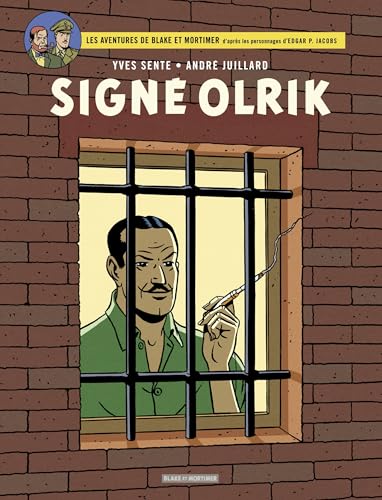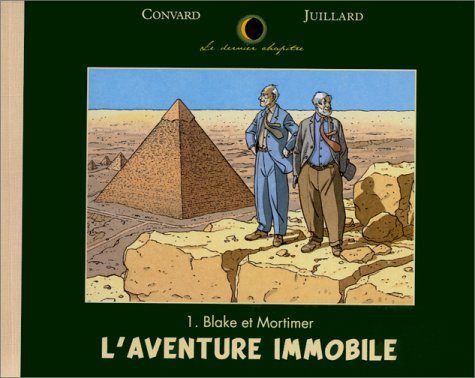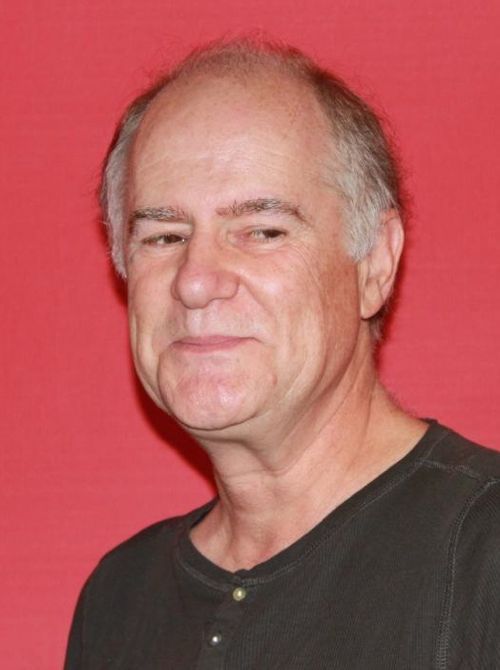


Books in series

Le Secret de l'Espadon - 1
1950

Le Secret de l'Espadon - 2
1953

Le Secret de l'Espadon - 3
1950

Blake & Mortimer, Vol. 2
The Mystery of the Great Pyramid Part 1: The Papyrus of Manethon
1954

Blake & Mortimer, Vol. 3
The Mystery of the Great Pyramid Part 2: The Chamber of Horus
1955

La Marque jaune
1956

L'Énigme de l'Atlantide
1955

S.O.S. Météores
1959

Le Piège diabolique
1962

L'Affaire du collier
1967

Les 3 formules du professeur Satō - 1
1977

Les 3 formules du professeur Satō - 2
1977

L'Affaire Francis Blake
1996

La Machination Voronov
2000

L'Étrange Rendez-vous
2001

Les Sarcophages du 6ᵉ continent - 1
2003

Les Sarcophages du 6ᵉ continent - 2
2004

Le Sanctuaire du Gondwana
2008

La Malédiction des trente deniers - 1
2009

La Malédiction des trente deniers - 2
2010

Le Serment des cinq lords
2012

L'Onde Septimus
2013

Le Bâton de Plutarque
2014

Le Testament de William S.
2016

La Vallée des immortels - Tome 1
Menace sur Hong Kong
2018

La Vallée des immortels - Tome 2
Le Millième Bras du Mékong
2019

Le Cri du Moloch
2020

Le Dernier Espadon
2021

Huit heures à Berlin
2022

Signé Olrik
2024

A ameaça atlante
2025

Blake et Mortimer
L'Aventure immobile
1998

Le dernier pharaon
2019

L'Art de la guerre
2023
Authors

Jean Van Hamme, is a Belgian novelist and comic book writer. He has written scripts for a number of Belgian/French comic series, including Histoire sans héros, Thorgal, XIII, Blake and Mortimer, Lady S and Largo Winch. More on the brilliant, Jean Van Hamme: http://lambiek.net/artists/v/van-hamm...
Books can be attributed to "Unknown" when the author or editor (as applicable) is not known and cannot be discovered. If at all possible, list at least one actual author or editor for a book instead of using "Unknown". Books whose authorship is purposefully withheld should be attributed instead to Anonymous.

Peter van Dongen kon op de kleuterschool al beter tekenen dan andere kinderen. Hij studeerde na de middelbare school aan het Grafisch Lyceum in Amsterdam en is na zijn opleiding als illustrator gaan werken. Zijn eerste boek Muizentheater, een verhalenbundel rond de lotgevallen én de ondergang van twee broers in crisistijd en oorlog, voltooide hij in 1990. Hiervoor ontving hij de Stripschappenning voor het beste album van dat jaar. Naast zijn werk als commercieel illustrator begon hij in 1991, direct na de bekroning van Muizentheater, aan zijn tweede boek, Rampokan-Java. Uiteindelijk zou hij nog vier jaar aan Rampokan-Java werken. Van Dongen leerde Indië kennen uit de verhalen van zijn Chinees-Indische moeder. Het tweede deel, Rampokan-Celebes, opent met het beruchte bombardement van de havenstad Makassar, dat zijn moeder als klein meisje meemaakte. Het bombardement werd uitgevoerd door de marine van het jonge Indonesië dat nog een appeltje te schillen had met de restanten van het Koninklijk Nederlands-Indisch Leger. Peter van Dongens tekenstijl is erg beïnvloed door bijvoorbeeld Kuifje. Hij gebruikt de Klare Lijn-stijl in zijn werk. Er zijn veel stilistische overeenkomsten tussen Hergé en Van Dongen. Maar daarnaast zijn er ook veel verschillen. Van Dongen tekent meer cinematografisch, wat volgens hem ook logisch is met de invloed van televisie vandaag de dag. Van Dongen snijdt als televisie scènes door elkaar heen, iets wat weinig in strips wordt toegepast. Rampokan is in samenwerking met Joost Swarte vormgegeven. In de zomer van 1998 heeft Het Parool dagelijks een pagina uit Rampokan-Java voorgepubliceerd. Met Rampokan-Java won Van Dongen de Stripschappenning voor 'Beste Album' in de categorie 'Oorspronkelijk Nederlands'. Het werd bekroond als een van de Best Verzorgde Boeken van 1998. Daarnaast ontving Van Dongen voor Rampokan-Java in 1999 in Brussel de Prijs de Leeuw. Voor Rampokan-Celebes mocht van Dongen in 2005 de Stripschappenning in ontvangst nemen, ditmaal in de categorie 'Oorspronkelijk Nederlands Literair'.

(aka E.P. Jacobs) Edgar Pierre Jacobs naît le 30 mars 1904 à Bruxelles. Il se passionne très tôt pour le dessin et la musique. Après avoir exercé quelques petits métiers, il travaille dans la publicité. Parallèlement, à partir de 1921, il devient figurant au Théâtre Royal de la monnaie à Bruxelles. Le 25 août 1922, le futur chanteur d'opéra signe son premier contrat d'artiste aux cotés de Mistinguett pour la Grande Revue du Casino de Paris. Le 29 août 1929, le baryton reçoit le premier grand prix de chant. Il sera engagé juste après, comme artiste lyrique, à l'opéra de Lille. En 1940, il doit abandonner la scène, à cause de la seconde guerre mondiale, chose qu'il regrettera toute sa vie. Le "baryton du neuvième art" allait dès lors s'illustrer dans des travaux graphiques alimentaires (publicité, catalogues, presse) qui le mèneraient à d'autres "planches", celles de la Bande Dessinée, dérisoires à ses yeux, qui pourtant lui assureraient une gloire de diva. En 1941, il entre au journal "Bravo". Après quelques illustrations pour divers contes, nouvelles et romans, il se voit confier, en 1942, la reprise de "Flash Gordon", cette saga américaine dessinée par Alex Raymond ne parvenant plus en Belgique. Il s'en acquitte avec bonheur mais la censure allemande interdit la série quelques semaines plus tard. En 1943, Jacobs élabore une nouvelle bande dessinée de science-fiction intitulée "Le Rayon U". Jusqu'en juillet 1946, il collabore à "Bravo". Entre-temps, il fait la connaissance d'Hergé. Ce dernier lui confie, à partir de 1944, la mise en couleur et les décors de ses albums. Il entreprend des corrections, des remises au format et les coloriages de "Tintin au Congo", de "Tintin en Amérique", du "Sceptre d'Ottokar" et du "Lotus Bleu". Il travaille également sur le "Trésor de Rackham le Rouge", les "Sept Boules de Cristal" et le "Temple du Soleil". Cette collaboration liera les deux hommes d'une profonde (et rivale) amitié qui culmine au lendemain de la guerre lorsque Jacobs n'hésite pas à jouer du gourdin pour défendre Hergé contre les épurateurs d'une autre espèce de "collaboration". En septembre 1946, Hergé invite son compère à participer au lancement du journal "Tintin". Le 26 septembre de cette année-là, dans un numéro 1 aujourd'hui recherché comme une pièce de trésor, paraît la première page du "Secret de l'Espadon". L'aventure de nos trois immortels héros : Blake (inspiré par son grand ami Jacques Laudy), Mortimer (inspiré par son autre grand ami Jacques Van Melkebeke) et Olrik (inspiré de Jacobs lui-même) commence. Ce dernier, colonel et gangster à monocle, est l'incombustible prince du mal que combattent deux chevaliers de l'ordre historique et scientifique : l'émérite capitaine d'aviation Francis Percy Blake, chef du "MI5", blond et flegmatique Gallois, et son "good old fellow", le professeur Philip Edgar Angus Mortimer, bouillant barbu rouquin (né aux Indes), spécialiste de physique nucléaire tout autant que de biologie moléculaire. En 1947, Jacobs abandonne sa collaboration avec Hergé et se consacre dès lors de manière quasi-exclusive à sa propre série où il fait vivre de multiples et périlleuses aventures à ses very British Héros. Après avoir gagné, grâce à l'Espadon (un sous-marin volant révolutionnaire), la troisième guerre mondiale menée par le diabolique colonel pour le compte des Jaunes (Hiroshima, en 1946, n'est pas encore un remords ...), Blake et Mortimer ne perceront "Le Mystère de la Grande Pyramide" (début de la parution le 24 mars 1950) qu'après un nouvel affrontement, en Egypte, avec Olrik,... qui s'en sortira, forcément, mais si déglingué qu'il deviendra l'esclave téléguidé d'un savant fou dans "La Marque Jaune" (début de la parution le 6 août 1953), semant la terreur dans Londres, où veillent heureusement Blake et Mortimer. Ces derniers ne laisseront échapper leur ennemi préféré que pour mi
Source:Dupuis Publishing http://www.dupuis.com/servlet/jpecat?... Little José-Louis was born in Neuilly-sur-Seine on 28 August 1962 and became passionate about good comic strips so quickly that at the age of 13, he founded Bizu, his own fanzine. He then established various illustrated anthologies for Bédérama, offering compilations of work by authors such as Franquin, Binet and Andréas. To satisfy his passion for reading, he got a job with the Temps Futurs bookshop at the start of the 1980s and, together with friend and companion Jean-Luc Fromental, he took part in the production of the works of L'Année de la Bande Dessinée), published by that Parisian temple of cartoons and science-fiction. His first articles started to appear in Metal Hurlant and he became a press attaché for Humanoïdes Associés in 1983, then became their collections editor. His first scripts were illustrated by Serge Clerc ("Les mémoires de l'espion"), Arno (Anton Six and "Kriegspiel"), Franz ("Mémoires d'un .38", in collaboration with Fromental), Max ("Panzer Panik") and Biard ("Le 38° Parallèle", in collaboration with Rivière). It was working with François Rivière on scripts and with Philippe Berthet for illustrations that he commenced his most ambitious series in 1983, "Le Privé d'Hollywood". Fuelled by the old-style detective novels by Stuart Kaminsky and the initial works of the Série Noire, this reconstruction of an America which disappeared a long time ago has retained all of its charm, a fact confirmed by its reissue as a complete version in 1999. From 1989 to 1991, he wrote scripts for Francis Vallés" trilogy of the adventures of the reporter Dorian Dombre (for Glénat) and endeavoured to bring back memories of Jerry Spring with Franz ("Fureur Apache", for Alpen in 1990). In 1991, he and Jean-Baptiste Gilou took part in the creation of La Sirène publications in which he published a monumental monograph on film director Henri-Georges Clouzot. A man with taste and many talents, he was also assistant editor in chief on Salut Les Copains and presenter on TF 1, but writing remained his biggest pleasure and it is therefore no surprise to find several of his novels in the catalogue of Série Noire and other popular editors. In 1997, he worked with Marie-Ange Guillaume on editing a biography of René Goscinny for Actes-Sud and he provided the script to "Timbrés rares" for Antonio Cossu and Louis Joos.

Yves Sente was born in Brussels in 1964. When he was little, he read La Marque Jaune, Jacobs' masterpiece, over and over again. Little did he know at that age that The Adventures of Blake and Mortimer would determine his destiny...! In 1998, while he was working for Le Lombard, he worked with the cartoonist André Juillard on the script of La machination Voronov, a new episode of the Blake and Mortimer, a Cold War story acclaimed by critics and the public. Yves Sente then went on to write Les Sarcophages du 6e continent, where he reveals the young life of Professor Mortimer. He confirmed his writing talents with La Vengeance du Comte Skarbek (Dargaud; The Revenge of Count Skarbek, Europe Comics) and then Thorgal (Le Lombard; Cinebook/Europe Comics in English), taking over for Jean Van Hamme alongside Rosinski.


Ted Benoit, born Thierry Benoît (Niort, 1949 - Paris, 2016), was a French cartoonist, best known for his ligne claire art style. Benoit studied at the Institut des hautes études cinématographiques ('Institute for Advanced Cinematographic Studies') in Paris and started his working career as a television assistant director. His early comics have been published in a number of French magazines, such as Geranonymo, Métal hurlant, L'Écho des savanes, Libération and (À suivre). Benoit's first comic album Hôpital received the best script award at the Angoulême comics festival in 1979. Among his other works are vers la Ligne Claire (1981), Bingo Bongo et son Combo Congolais (1987) and the three tomes of the noir pastiche series Ray Banana (1982, 1986, 2014). He also illustrated two volumes of the famous French comic series Blake et Mortimer by Jean Van Hamme.


